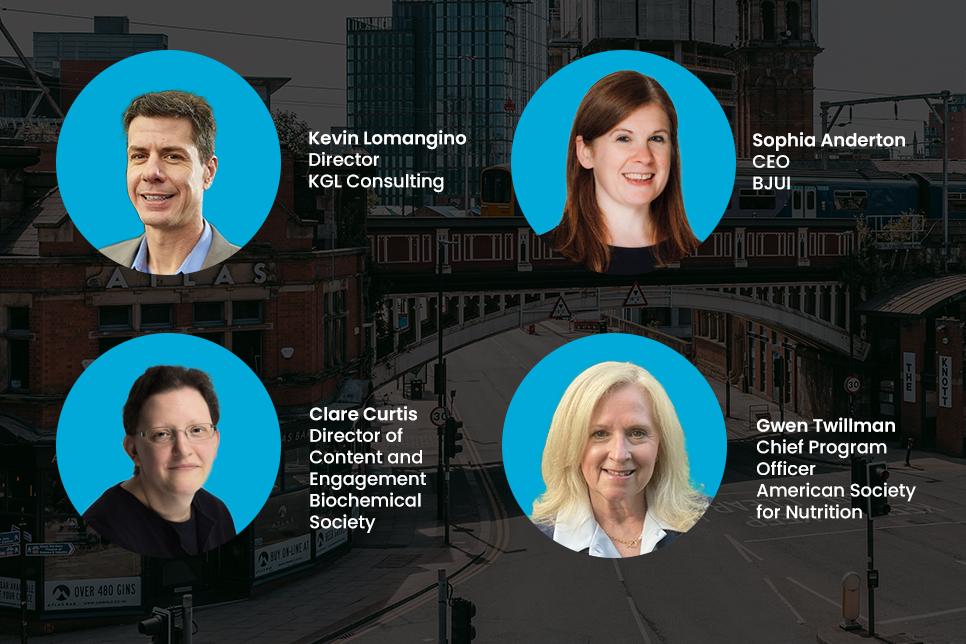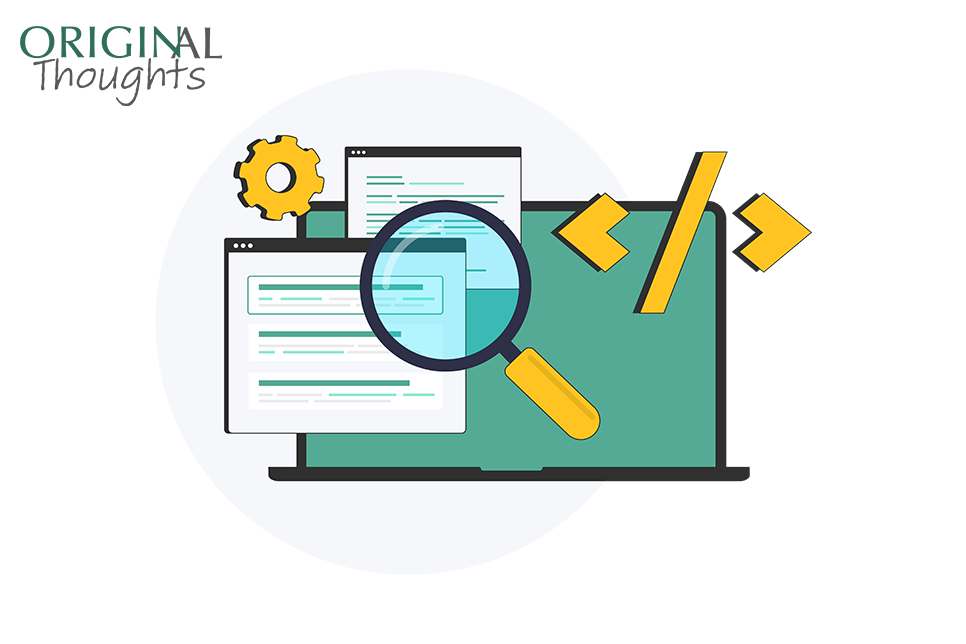Blog post
Scholarly Publishing is Reluctantly Embracing Artificial Intelligence: What You Should Know to Stay Relevant, Visible, and Impactful
13 Feb 2025

First posted on the ORIGINal Thoughts Blog

Director of Scientific Outreach, American Society for Investigative Pathology
Founder and President, Samast AI
Email: chhavi@samast-ai.com
LinkedIn: https://www.linkedin.com/in/chhavichauhan/
Editor’s Note: This article is part of a series that will inform readers about the impact of artificial intelligence (AI) in scholarly publishing and provide recommendations to ethically and responsibly leverage and operationalize AI in the editorial office and the scholarly publishing value chain.
Take Home Points:
- Artificial intelligence (AI) can significantly improve editorial office workflows and should be leveraged proactively for growth and sustainability
- The best, easiest, and fastest approach to using AI is to start small and then address/resolve existing pain points with generic tools
- Keeping a growth mindset, it is worthwhile to strategically define the scope and usage of AI at an enterprise level
If you keep up with the global developments in scholarly publishing, one thing must be evident to you—we MUST remain agile to stay relevant, visible, and (in many instances) employed. The recent advent of newer, cheaper, and more powerful artificial intelligence (AI) models like DeepSeek, OpenAI, o3 and Operator, Copilot, Gemini 2.0 Flash Thinking, and now, most recently, Adobe’s Firefly, is quickly making some personnel, certain skills, and many mundane workflows obsolete!
Since the November 2022 launch of Chat-GPT, Open AI’s flagship large language model (LLM), even our industry, famous for thoughtful deliberation, has made swift changes to established policies. So far, there is a global consensus that AI cannot be an author of a research paper, as it cannot be held accountable or responsible for the content. However, with quickly emerging novel tools and their evolving usage, journals, societies, editorial offices, publishers, researchers, and authors are grappling with ethically and responsibly leveraging and operationalizing AI to see a significant positive impact and to enforce relevant guidelines.
In this series, I plan to share a much-needed roadmap for our industry to ethically and responsibly leverage and operationalize AI to keep up with the rapidly changing times. In this opening blog post, I will briefly review the current landscape. I promise to equip each and every reader with knowledge of AI tools (Table 1) to bring about the needed change by integrating them into their personal and professional settings (within the confines of ethical policies instituted by your employer). After carefully reading this post and trying out some of the freely available shared resources, you will notice a shift in your comfort level in using and exploring various AI tools available in the scholarly publishing ecosystem. Hopefully, you will feel comfortable embracing AI tools to help you upskill and continue leveraging your expertise to stay relevant and visible in your current roles and as your responsibilities evolve.
As we begin, I invite the readers to keep an open mindset and mindfully consider bringing about the following five shifts in their behaviors:
- Embrace change and experiment with innovation
- Cultivate a progressive and agile mindset
- Consider innovative approaches to engage key stakeholders
- Continuously evaluate impact
- Collaborate
Embracing Change and Experimenting with Innovation
I understand that change is difficult to process and embrace, especially in our domain. However, I couldn’t agree more that change is the only constant in our lives. I am confident that all the seasoned professionals reading this blog would agree that despite the challenges, the reluctance, and the slow pace, our industry (though incrementally) does change eventually!
As daunting as it may initially seem, it is time to open up to understanding the shifting landscape, play around with the freely available AI tools in personal and professional capacities, and explore how you could leverage them to solve your unique problems, decrease your daily burdens or do something exciting, and delegate your unwanted tasks.
We can start with the basics; there is power in keeping things simple. Perhaps you may want to try to write a haiku or synthesize a Valentine’s Day card for your beloved, plan a party or an event, concoct a new recipe, plan a trip to break free from the noise around us, summarize a document (or yet another executive order!), synthesize an outline of a manuscript or an editorial project to get started on an idea, perform a quick grammar check, summarize a long email thread, review your work, identify deficiencies in your current write-up, generate new images for a social media campaign, write code, or create new videos. I encourage you to pause and take a minute to explore several freely available resources (within the confines of your own discretion): Open AI’s Chat-GPT, Microsoft Copilot, Meta AI, Google’s Gemini, Deep Seek, Sora AI, or Hugging Face. Here are some prompt examples and outputs to consider to help you get started:
Create/generate a <output/product: video, image, haiku, outline, plan, summarize, etc.> showing <elements: hearts, rainbow, diverse readers, key points, article, etc.> with <aspects: warm, cozy, lively, professional, colorful, etc.> and include <your specific needs>
Feel free to use my prompt and refine it to see how it may alter the output for this image, this vibrant card, this trip plan, this PowerPoint to diversify reviewer boards, you get the idea; enjoy!
Feel free to comment below to share your experiences as you start, and as you get more comfortable, you’ll become even more creative by adding nuances to the prompts you share with these AI tools. Don’t forget to share (even boast) about them with your family and friends.
Progressive and Agile Mindset: Identification of Current Needs in Light of Emerging Opportunities
Now that you have experimented with using some of the freely available AI tools above, let’s take it a step further. You now know you can use these AI tools and that using them can be fun, liberating, and quick with just a few prompts! If you are wondering why you waited so long to give them a try, you are not the only one. Each and every one of us who has tried AI tools has questioned themselves similarly. It is now time to move on!
Brace yourself; you may want to sit down for this one and take a deep breath. As a working professional, what is your biggest pain point right now? It could be writing an email (amicably) after reviewing a long ongoing thread, summarizing a meeting’s action items, finding a reviewer for a specialty subject, analyzing a spreadsheet with review turnaround statistics, planning the details of the upcoming editorial board meeting, figuring out the meeting logistics, writing a communication plan, or designing graphics for a press release or social media promotional piece. You get the idea: anything big or small that comes in the way of you being most efficient and productive each day.
Once you have identified a pressing need to resolve a particular pain point, use your AI tool of choice and prompt the model for recommendations to address these pain points. You may need to feed additional (and allowed) supporting data or information into your prompt to refine the output. For example, you may take a reviewer pool and scrub it clean of the names and affiliations to start analyzing other parameters like the demographics of this de-identified sample. You can get granular here, sharing more context and details, delineating parameters to what is approachable, highlighting specific needs, and setting boundaries to define what would be out of scope. For example, if you are looking to diversify your reviewer pool, you may want to highlight the specialty for which you are seeking a reviewer, reviewer expertise (use keywords that your journal uses for submissions in this category), desired institutional or geographical location of the reviewer, professional degrees, past publications, even network connections or public information on their performance as a reviewer or publicly available recommendations for that matter. I am sure your mind is already racing with ideas to address your unique needs! Rinse and repeat; follow the steps in the previous section to see how these AI tools can help you address your unique pain points.
Again, feel free to comment below to share your experiences as you start and get more comfortable, becoming even more creative by adding nuances to the prompts you share with these LLMs. Don’t forget to share (even boast) about them with your family, friends, and professional network.
Once you have indulged yourself, take it a notch up by creating your own GPT for your specific use case. In a subsequent dedicated blog post, I will share guidelines and example GPTs to explore editorial office use cases.
Innovative Approaches to Stakeholder Engagement
Great going with getting so conversant with the AI tools and improving your efficiency and productivity! Let’s take this one step further.
Identify the key stakeholders in your professional capacity. Are they authors, researchers, reviewers, editorial office staff, publishers, readers? You get the idea. Now deliberate on what has been holding you back from effectively engaging with them (limited time and bandwidth, limited resources, lack of expertise or access to experts, limited subject knowledge, etc.). If you are already adequately communicating with them, think about your overarching goals and how you could enhance this engagement. Rinse and repeat using the above-listed AI tools or the tools further recommended by these LLMs. For example, Origin Editorial’s Senior Partner, Dr. Jason Roberts, used Luca AI Video Creator by idomoo.ai for $5 to generate this high-quality short marketing video on social media with no prior experience, all in less than five minutes, each by giving quick prompts. Perhaps you may want to give it a try, too. I created the video below within a minute using the free version of the recently released Adobe Firefly AI tool using a very simple prompt: generate a video of “a diverse reviewer board brainstorming ideas and concepts to synthesize a Valentine’s Day message and card.”
Continuous Impact Evaluation
Now that you are so well conversant with several AI tools and are empowered to leverage their capacities for many different tasks, take a moment to evaluate AI’s impact before moving forward. Establishing quantifying metrics to make a business case is always a good idea. Using a couple of specific examples, if you used AI to boost marketing, review and compare the engagement metrics: number of likes, re-shares, comments, new engagements, new followers, etc. If you used AI tools to help diversify the reviewer pool, collate the number of new leads proposed, the number that responded, the subject matter expertise you added to the reviewer pool, the institutional or regional representation you added to your reviewer pool, etc. These metrics and their assessment will vary based on each use case, but you are the domain expert and can define the best metrics to qualitatively and quantitatively measure success. So, go for it!
Many vendors like Molecular Connections, Reviewer Credits, Cactus AI Solutions, Wiley Partner Solutions, Elsevier, Silverchair, to name a few, are offering a bunch of AI tools and services to help improve workflows in the scholarly publishing domain, enhance stakeholder engagement, identify and mitigate scientific misconduct, etc. (Table 1). Please note that this post does not endorse any company or their products. I work closely with several vendors and each AI tool has its own strengths that make it superior for a given use case/entity and each one of them has its limitations, again based on the specific use cases. Reach out to the experts and your network to explore which offerings are most suitable for your unique needs.
The Future of Scholarly Publishing is Collaboration
I realize that you are now an independent expert at using AI tools to improve efficiencies, enhance productivity, streamline processes, and overcome unique challenges, especially given your depth of knowledge of your domain. However, to scale your efforts, to ensure you develop, implement, manage, and scale responsible AI tools ethically, and to sustain your efforts over time, you may have to rely on the expertise of other industry partners who have the unique skills, talented professionals, scaling capabilities, oversight mechanisms, especially keeping human-in-the-loop, troubleshooting abilities, and knowledge of evolving industry products and landscapes. Bottom line: you can manage your emerging needs with the evolving times, but to stay ahead of the curve, you may want to keep an open mind and identify like-minded partners who complement your skill sets and can serve your needs to give you that growth advantage that your competitors may currently lack.
The best way to find yourself a perfect partner is to explore leads within your network as they know you, understand your needs, appreciate your goals and missions, and can match the individual/entity with the needed skill set. The second-best approach to finding yourself the best fit is to rely on a professional matchmaker who understands the fields, relates to your pain points, appreciates your unique needs, recognizes your values, as well those of a formidable partner. What’s holding you back?
Table 1: Some representative AI tools currently used in the scholarly publishing value chain*
| AI tools | Use in scholarly publishing value chain | Source |
| Grammarly | Writing | https://www.grammarly.com/ |
| Typeset | Research; writing; AI detector | https://typeset.io/ |
| Wordtune | Writing/formatting | https://www.wordtune.com/ |
| Jenni.AI | Reading, writing, and organizing | www.jenni.ai |
| Midjourney | Generate images; brainstorm ideas | https://www.midjourney.com/home |
| Writefull | Writing | https://www.writefull.com/ |
| ProWritingAid | Writing | https://prowritingaid.com/ |
| American Journal Experts (AJE) | Editing | https://www.aje.com/ |
| Open AI | Writing, editing, formatting, discovery and dissemination, marketing | https://openai.com/ |
| Elsevier (Manuscript Evaluate) | Submission and peer review | https://www.elsevier.com/connect/announcing-the-new-evaluate-manuscript |
| Paperpal Preflight | Writing, editing, plagiarism checker, submission checks, online translator | https://paperpal.com/homev2 |
| KGL Smart Suite 3.0 | Publishing, workflow, discover and dissemination | https://www.kwglobal.com/smart-suite-3/ |
| (Geppetto and SnappShot) Springer | AI detector; image integrity | https://group.springernature.com/gp/group/media/press-releases/new-research-integrity-tools-using-ai/27200740 |
| Proofig | Image and research integrity | https://www.proofig.com/ |
| Turnitin | Writing; plagiarism detection | https://www.turnitin.com/ |
| Clarivate | Data analytics; workflow solutions (submission and peer review) | https://clarivate.com/ |
| STM Integrity Hub | Image and research integrity | https://stm-assoc.org/what-we-do/strategic-areas/research-integrity/integrity-hub/ |
| Prophy.ai | Research, peer review | https://www.prophy.ai/ |
| Trinka AI, Enago Read, Enago Report, | Reading, writing, editing, plagiarism detection; peer review and workflow | https://www.enago.com/ |
| CACTUS AI solutions | Discoverability and dissemination; analyze rejections; find appropriate journal, peer review, research integrity | https://aisolutions.cactusglobal.com/ |
| Imagetwin (Molecular Connections) | Research integrity, data analytics, peer review, workflows | https://molecularconnections.com/ |
| Imachek | Research integrity | https://www.imachek.com/ |
| Wiley Partner Solutions | Workflow, discovery and dissemination, marketing | https://www.wiley.com/en-us/business/partner-solutions |
| Scholarcy | Reading | https://www.scholarcy.com/ |
| Access Innovations Inc. | Taxonomy, metadata solutions, research integrity | https://www.accessinn.com/ |
| Expert.ai | Research, workflow | https://www.expert.ai/ |
| Microsoft Azure | Discovery, dissemination, workflow, production | https://azure.microsoft.com/en-us/ |
| Ontochem | Workflow, production, publishing | https://ontochem.com/ |
| Ontotext | Research, data analytics, workflows | https://www.ontotext.com/ |
| AWS | Research, data analytics, workflows | aws.amazon.com |
| Google Cloud | Workflows | https://cloud.google.com/ |
| Transkribus | Research, discovery and dissemination | https://www.transkribus.org/ |
| DeepL | Translate, writing, discovery and dissemination | www.deepl.com |
| Planet AI | Research, discovery and Dissemination | https://planet-ai.com/ |
| ResearchRabbit | Research, reading, data analytics, discovery and dissemination | https://www.researchrabbit.ai/ |
| DImensions | Research, workflow, peer review, research integrity | https://www.dimensions.ai/ |
| Lens.org | Research, workflow, collaboration, discovery and dissemination | https://www.lens.org/ |
| Elicit | Reading, research | https://elicit.com/?redirected=true |
| Scite_ | Research, discovery and dissemination | https://scite.ai/home |
| Iris.ai | Research workflow, discovery and dissemination | https://iris.ai/ |
| Research Square | Writing, submission, discovery and dissemination | www.researchsquare.com |
| Mendeley | Research, writing | www.mendeley.com |
| TrendMD | Discovery and dissemination | www.trendmd.com |
| Averbis | Research, data analytics, workflows | www.averbis.com |
| Perplexity | Research, writing, editing, reading, discovery and dissemination | https://www.perplexity.ai/ |
| OpenAlex | Research | openalex.org |
| Scopus | Research, discovery and dissemination | www.scopus.com |
| yewno | Research; discovery and dissemination | www.yewno.com |
| Semantic Scholar | Research; discovery and dissemination | www.semanticscholar.org |
| Consensus | Research, data analytics | consensus.app |
| Claude | Research, workflows, discovery and dissemination | www.anthropic.com |
| Scispace | Research, write, AI detector | typeset.io |
*This is a representative list (some tools may be missing) and is in no way an endorsement for any tool or vendor.
Disclaimer: User discretion is needed while using AI tools and sharing data/proprietary information to conform with individual comfort level as well as organizational needs and statutory guidelines.
Origin Editorial is now part of KnowledgeWorks Global Ltd., the industry leader in editorial, production, online hosting, and transformative services for every stage of the content lifecycle. We are your source for society services, market analysis, intelligent automation, digital delivery, and more. Email us at info@kwglobal.com.
Related Posts

Building Resilient Publishing Programs: a Conversation with Three Society Publishers

Connection is the Heart of Association Membership


